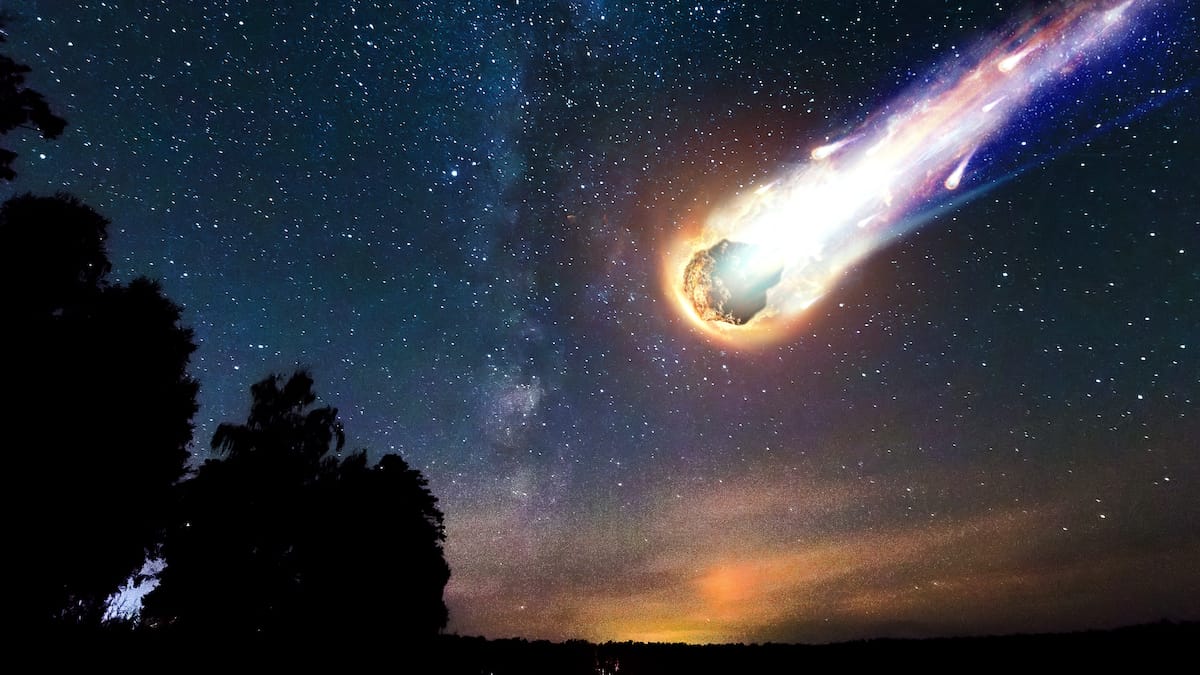
Look up or don’t look up: We probably won’t see the one that gets us
Tick tick, y'all.
On September 17, a stadium-sized asteroid did not quite hit our planet. This is considered good news.
Let me back up.
Our planet is tracing an elliptical orbit around a middle-aged star in the outer arm of an average galaxy. It’s been doing that for six billion years and will continue doing that for another six billion, at which point the star will explode. Then the Earth will stop doing that.
There’s a chance that something interesting will happen before the Sun explodes. A pretty fair chance, because there are lots of other things tracing orbits around the Sun—tens of millions of things, mostly asteroids of various sizes. Most of these tens of millions of asteroids are very small. When they enter our atmosphere, as they do in their thousands every day, they burn up, producing a pretty streak of light that your friend Kevin is always too damn slow to see.
Asteroid 2022 EB5 impacted Earth’s atmosphere on March 11, 2022. Like the comet in the movie Don’t Look Up, we saw this one coming. Unlike the film, 2022 EB5 was too small to hurt anything.
NASA posted a video showing the path of the asteroid prior to its impact over the Norwegian Sea.
The video gives the impression that NASA was tracking this rock for months ahead of time. Not so: It was spotted just two hours before impact. The animation was created retroactively in service of our illusion of control.
A few million of the asteroids in our solar system are big enough that if one of them hits us, you’ll wish it hadn’t. You won’t have to wish it for very long—somewhere between two days and two seconds, depending on how far from ground zero you are. Then your worries will be over. Everybody’s worries, in fact.
Most of those asteroids can’t hit the Earth even if they try.
Isn’t “most” an interesting word?
It turns out that some of the asteroids large enough to make us wish, for a short time, that they hadn’t hit the Earth can hit the Earth, even if they don’t try, because their orbits intersect the orbit of our planet. NASA scientists estimate as many as 2,300 asteroids big enough to end most or all life on Earth cross our orbit regularly and repeatedly. Several have already hit us. The last one, 65 million years ago, wiped out 75 percent of all life on the planet, everything larger than a duck. (The Permian extinction, 185 million years further back and more likely the result of volcanic activity, wiped out 90 percent. Everything larger than a duck poop.)
Years ago, I heard an astronomer interviewed about this. What is the likelihood, he was asked, of one of those life-larger-than-a-duck-or-its-poop-ending asteroids hitting our planet?
I remember his answer, and so will you.
“Let me rephrase your question a bit,” he said. “The likelihood of every single one of them eventually hitting Earth,” he said, “is nearly 100 percent.”
See? Memorable.
It probably won’t happen before you finish this article and share it with all of your friends. But this afternoon during a rerun of Keeping up with the Kardashians is no less likely than during any other Kardashians episode in the next hundred million years.
How much warning would we have? “In five percent of occurrences we’d have a warning window of hours or days, maybe weeks,” said the astronomer. “Not that it would matter, because, despite the Bruce Willis movies, there’s nothing we could do about it.”
Okay, let’s hope to avoid that five percent. And the other 95 percent? How much warning then?
“None. In most events, we’ll know when the thing slams into New Jersey at 30,000 miles per hour. Everyone within 500 miles will go quickly. The sun will then vanish behind a worldwide dust cloud for two years, which finishes the rest of us.” The duck poop scenario.
NASA issued a press release about 2022 EB5 because it had been spotted in advance—only the fifth time we saw an Earth-impacting asteroid before it saw us. Our detection efforts have improved since that long-ago interview: Astronomer Krisztián Sárneczky (same person who saw EB5) spotted one the size of a house before it whizzed by, well inside the orbit of the Moon, on Monday. It was the third asteroid in a week that had passed by less than one lunar distance away. But the pinball game still includes thousands of unseen balls with our name on them.
Tick tick, y’all.
This is just one of the many ways we live in denial of the tiny bubble of illusory stability in which we currently find ourselves, between asteroids, between extinctions, between eternities—the universe’s and our own. We seem so solid, so eternal, when in fact we are a literal heartbeat away from death every second. Sorry. It’s one of the two central jokes of human existence: the difference between how permanent and stable we feel and how very temporary and tenuous we are.
I can’t remember the other joke. Something about a rabbi.

